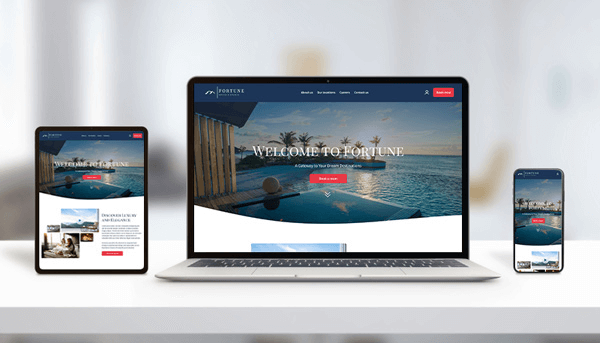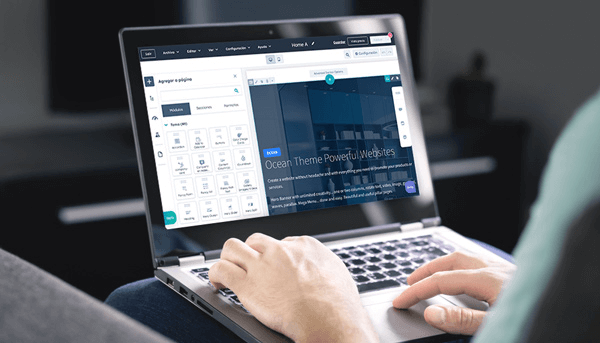In this century, if you want to be present in digital media, it is essential to create a website for your business. However, this is not all; to obtain truly valuable results, you need to know the best techniques for website optimization.
No matter the type of page you have, all of them require this to generate an unforgettable user experience and, of course, to be relevant in search engines.
The main reason for opting for these strategies is that they will help you increase traffic and conversions on your site. Therefore, it is important that you invest in good practices of an SEO strategy.
So, if you want to have better performance for your website, keep reading and learn about the 10 most important tips for website optimization. Additionally, I will tell you about a powerful theme with which you will achieve just that.
Let's see!
What are the pillars of website optimization?

First of all, let me tell you that within website optimization, there are fundamental pillars that will make everything flow, and they are all related to SEO. Let me explain them to you:
Page Load Time
The page load time of a website is crucial for retaining users. According to Google, the bounce rate significantly increases as a site takes longer to load. To optimize this, you can: minimize image size, use lazy loading, minify and combine CSS and Javascript files.
Dwell Time
The time a user spends on your site can indicate the quality and relevance of your content. For proper optimization of this, you can: create engaging and easy-to-read content, include multimedia such as videos, infographics, and galleries, and optimize the website structure.
Keywords
Using the right keywords ensures that the site is found by your target audience. For website optimization in this area, you should consider aspects such as:
- Conducting keyword analysis with tools like Google Keyword Planner or SEMrush.
- Incorporating them naturally into titles, meta descriptions, and more.
Content Quality

It's essential that website optimization includes valuable, relevant, up-to-date, and quality content for the reader. This encourages visitors to stay longer and want to return for more knowledge from you.
To achieve this, make sure to provide real value, offer solutions, and address user needs. Regularly update your content with trending information, product updates, news, blog posts, etc.
Internal Links
Internal links help improve SEO and guide users through your website. To optimize them, use anchor text—meaning the link text should be relevant to the page it points to.
Also, establish a logical hierarchy, ensuring a natural flow between your site's pages to facilitate navigation.
Relevance Authority
As the final, but crucial, factor for website optimization, there's authority, which is built through high-quality inbound links, brand recognition, and valuable content.
To increase your site's authority, you can:
- Generate useful and informative content worth sharing.
- Engage in guest blogging and write content for other relevant sites in your industry to gain inbound links and increase visibility.
Tips to Improve Website Optimization

As promised, I'm going to give you some tips that can help you improve website optimization and achieve the results you're looking for.
1. Understand User Intent
You need to understand your audience's preferences so you can offer them what they're looking for and provide a positive experience, as they are the reason your page should be relevant. Therefore, you need to delve into understanding what they desire.
For this, you must have a well-defined buyer persona, meaning you should know their behavior, location, age, gender, among other factors. Discover what topics interest them so you can provide appropriate content focused on their preferences.
2. Conduct Keyword Research
Apart from understanding their preferences, it's necessary to research and analyze the keywords that users search for when wanting to learn about your products or services.
The goal is to find words that you can incorporate into your web content to help your site become more visible in search engines. Once you have your list, integrate them strategically, naturally, and in the right places.
These should be included in meta descriptions, headings, URLs, etc.
3. Optimize Content Marketing

Google will always prioritize relevant, useful, and informative content, which is why it's essential to create unique and original content for website optimization. A good content marketing strategy will attract more traffic to your site.
By applying this, you will increase brand awareness, engagement, loyalty, and authority, as 60% of marketers say this technique generates higher demand. Some ways you can do this include:
- Posting on social media: Through your social networks, you can make posts that invite people to visit your website, such as on Instagram, Facebook, TikTok, etc.
- Creating landing pages: Formulate pages with CTAs that generate conversions by offering a value proposition.
- Having blogs: Publish SEO-based articles on relevant topics in your industry.
4. Improve UI/UX with web design best practices
Optimize user interface and user experience when designing the site, as this will help increase the conversion rate. If you don't believe me, here's a fact: 80% of consumers are willing to spend more for a better UX.
These two elements are responsible for optimizing the usability, accessibility, and performance of a website. Remember that the design should provide the customer with a journey aligned with their intention.
For example, if you have a fashion e-commerce site, you can implement a navigation bar at the top with clearly labeled categories like "Men," "Women," "Kids," "Accessories," etc. Additionally, include a search field at the top right to allow quick searches by product name, category, or brand.
Some ways to improve UX design are:
Optimizing menus: You can use plugin tools to customize simple menus. Including CTAs: CTA buttons should be visible and aligned with the site's design. Improving the sales funnel: Add clear steps between each part of the sales process as a guide to convert them into customers.
5. Optimize page loading speed
Page loading speed is a critical factor for website optimization. According to Google, this is one of the indicators they use in their algorithm when ranking pages.
Having a slow speed leads users to quickly abandon the page, as 47% of humans expect a page to load in less than 2 seconds. This time threshold underscores the importance of optimizing loading speed to retain visitors and avoid a high bounce rate.
To achieve this, you can:
- Optimize images
- Configure a content delivery network
- Use browser caching
- Utilize a content distribution network
- Optimize the database.
6. Use responsive design

Another tip for website optimization is to have a responsive design that adapts to the screen and device the user is using so that the site looks good on computers, tablets, smartphones, etc.
Today, most people use mobile devices to browse, so having a responsive design is essential for UX and SEO. An important statistic is that devices generate 54.4% of all global traffic.
Additionally, Google has mobile indexing where it ranks pages based on the mobile version, so if you're not doing this, you can be affected in search rankings.
Here are some ways you can implement responsive design:
- Clear navigation
- Create a responsive design that fits any device size
- Include clear links and CTAs
7. Improve On-Page SEO
On-Page SEO is a practice for website optimization where the contents of the webpage are optimized to rank better in search engines, meaning it helps the site be in the highest position in SERPs.
Remember that Google ranks sites that provide the most accurate answers to visitors' questions about a search term, which means more organic traffic.
To improve this aspect, you can do the following:
- Optimize titles and meta descriptions
- Improve URL structure, making them short, descriptive, and containing keywords
- Use H1, H2, H3 to organize content easily
Keep in mind that with SEO, you should provide valuable content to your audience and not just focus on getting keyword volume.
8. Get Quality Backlinks
Having quality backlinks is essential for website optimization; these are links from other sites that point to yours and are important because Google considers them to improve the authority of your page and as votes of confidence.
Here's an interesting fact: pages ranked higher on Google have an average of 3.8 times more backlinks than those ranked between the second and tenth position. Consider the following to implement this strategy:
- Use quality links from trusted websites
- Avoid buying links as it can harm your ranking
- Use links related to your industry
9. Conduct Experiments Periodically

To achieve good website optimization, it's necessary to conduct tests on the content that works best for you and improve the customer journey. Some experiments you can conduct include:
- Changes in CTAs
- Finding the best location for menus, images, text, and more
- Design and layout of Landing Pages
One of the best ways is by conducting A/B tests, which 60% of companies do. With these tests, you can visualize two different versions of the site and measure which one has more interaction.
10. Watch out for Negative SEO
As a final tip for website optimization, I recommend being careful not to fall victim to Black Hat SEO, which refers to actions taken by another site that harm yours, such as duplicating content.
Also, you should monitor your page frequently to check that keywords are not dropping in position. If you're experiencing a significant drop, you may be a victim of negative SEO.
Optimize your website with Ocean Theme Pro

Let's now talk about an award-winning HubSpot theme created by Media Source that will help you with all the aspects we just discussed for website optimization quickly and easily.
Our Ocean Theme Pro allows you to build a website within HubSpot's CMS Hub, and best of all, it's optimized for search engines. Here are some of its impressive features and functionalities to show you why it's so acclaimed:
Its main focus is on design, functionality, and user experience. It's highly customizable, so you can tailor it to your specific needs.
As mentioned, it's optimized for SEO, helping you rank on search engines. Additionally, it has a responsive design and adapts to any screen size.
Moreover, it's very user-friendly, as you don't need coding skills. With its control panel, you can customize colors, fonts, layouts, and more.
It offers over 40 modules that allow for more than 200 combinations with CMS Hub modules. You can also create CTAs with multiple options and test which one works best for you.
Loading speed is a top priority for Ocean Theme, so you can rest assured that this aspect of website optimization is covered.
Schedule a call with us and unlock better business opportunities with Ocean Theme Pro. We look forward to hearing from you!

.png?width=319&height=267&name=gtmetrix_2023%20(1).png)




